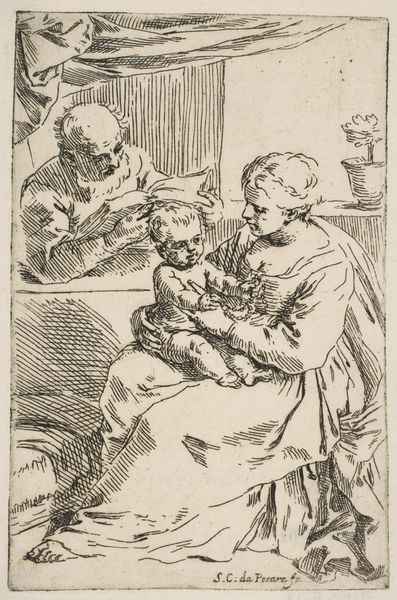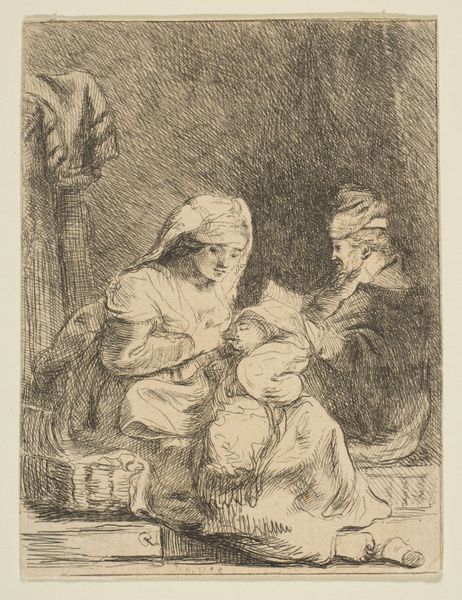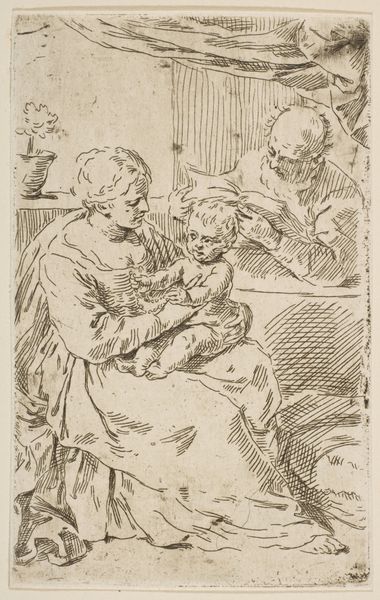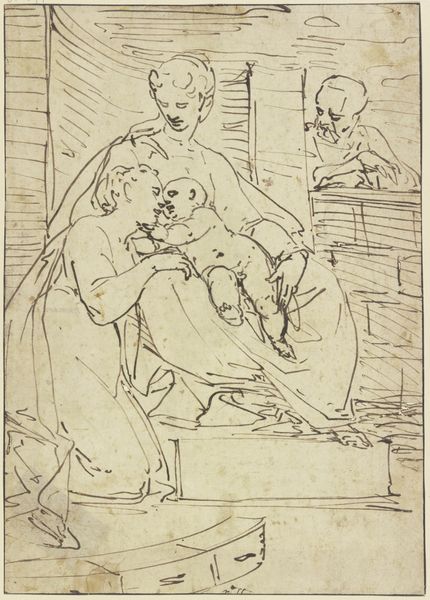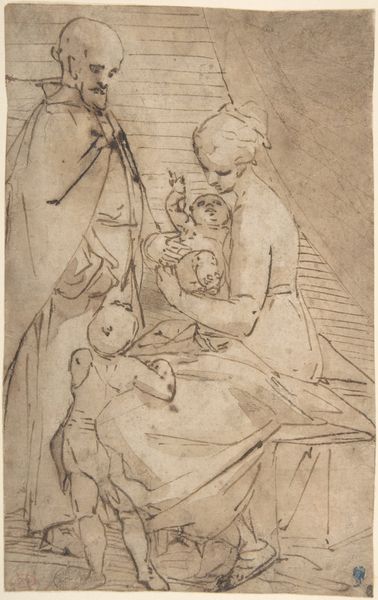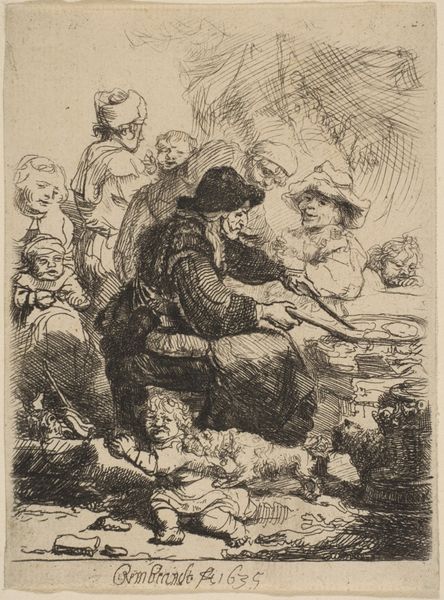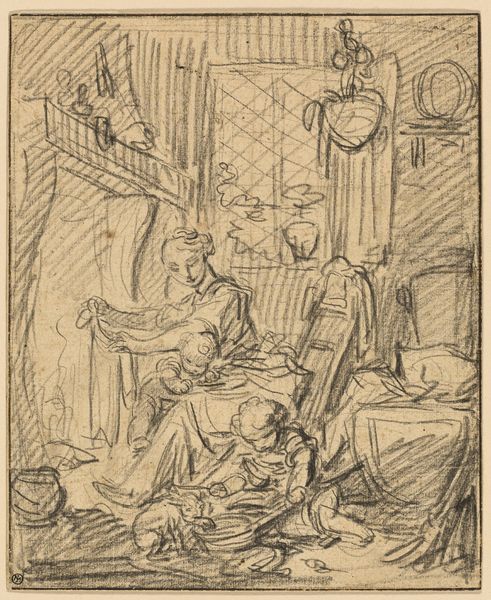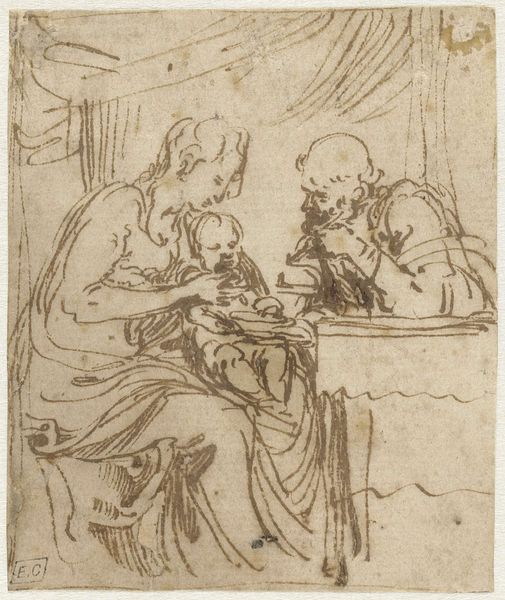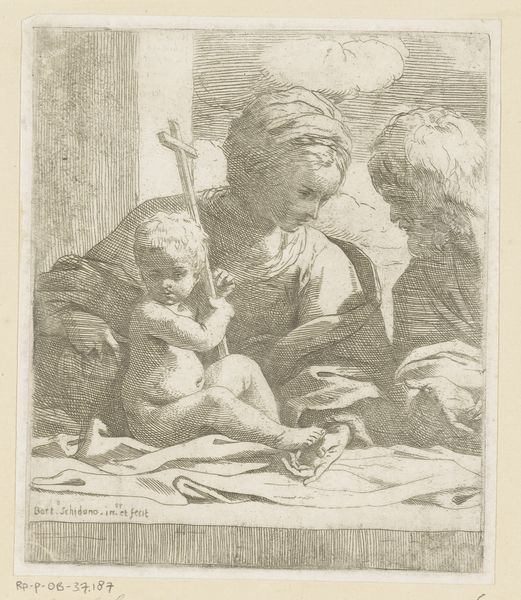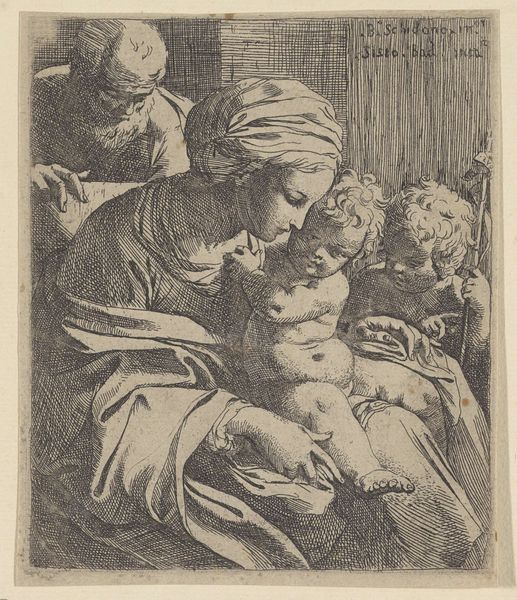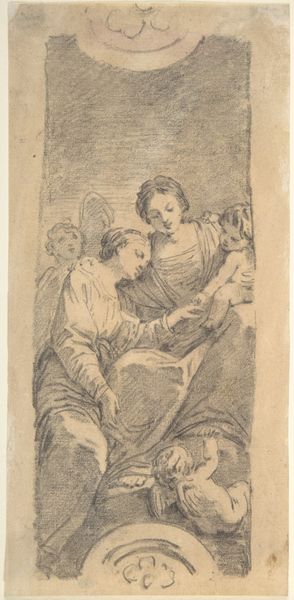
drawing, print, ink
#
portrait
#
drawing
#
baroque
# print
#
figuration
#
ink
#
history-painting
Dimensions: Plate: 5 1/16 × 3 5/16 in. (12.9 × 8.4 cm)
Copyright: Public Domain
Curator: Looking at Simone Cantarini's print, created between 1635 and 1647, entitled “Holy Family with a Rosary,” the figures exude tenderness despite being rendered in spare, brisk lines of ink. Editor: My first thought is how stark the image feels. There's a vulnerability in its rawness, an emotional intensity emphasized by the visible etching marks, making it seem less like a polished religious scene and more like a quiet, intimate moment. Curator: I'm drawn to the visual symbols—the rosary, of course, hinting at piety and prayer, and also to the presentation of Joseph tending to Christ's hair; domesticity is given reverence here. But notice how Cantarini does not portray Joseph with tools or a display of carpentry skills: The tender care of hair symbolizes nurturing beyond labor and profession. Editor: And yet that nurturing feels performative when taken into historical context. Baroque art often served the dual purpose of expressing religious fervor and legitimizing social hierarchies. In this artwork the performance of an idealized family reinforces the expectations of its time period: Where is the consideration for realities lived outside this small circle of gendered labor? How can we find the humanity beyond propaganda? Curator: I can see why you’d interpret it through that lens. To me, the power in those symbols lies in their ability to create emotional connection for the viewer—the family's faces express a shared inwardness, echoed in the closeness with which they are drawn together, the light hitting all of them. Even if rooted in established archetypes, the work’s emotional tone surpasses the propaganda by inviting contemplation and connection. Editor: Perhaps. But I’m hesitant to disconnect art from its societal implications, especially within Baroque’s promotion of authority, its drama working to inspire fervor but often blinding empathy. The beauty lies not just in emotion, but recognizing art's participation within systems of power. Curator: I appreciate your reminder to always consider context. And to reflect on my own potential biases toward certain symbolic systems. Editor: Indeed. Hopefully we've highlighted just how many layers are always worth untangling when we consider an artwork!
Comments
No comments
Be the first to comment and join the conversation on the ultimate creative platform.
